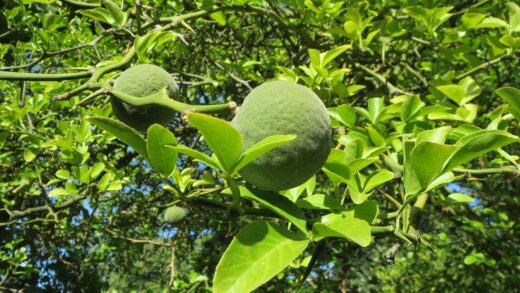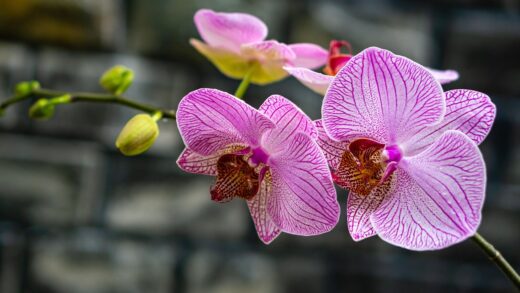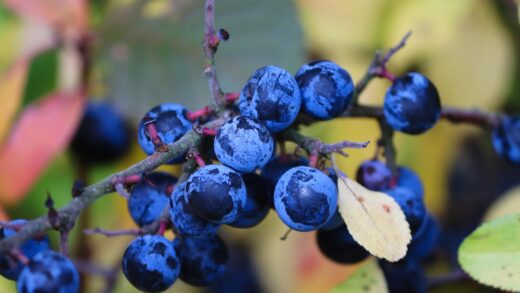Hosta ventricosa, commonly known as the ovate-leaved hosta, stands as a testament to nature’s artistry, offering lush foliage and graceful blooms to shaded garden corners. Esteemed for its glossy, dark green, heart-shaped leaves and striking deep purple flowers, this herbaceous perennial provides a robust and architectural presence throughout its growing season. Proper care is fundamental to unlocking its full potential, ensuring the plant not only survives but thrives, developing into a magnificent clump that becomes a focal point of the landscape. Understanding its basic needs regarding light, water, and soil forms the cornerstone of a successful cultivation strategy, rewarding the gardener with a display of enduring beauty and resilience. This comprehensive guide delves into the essential practices required to maintain the health and vigor of this exceptional garden specimen.
This particular hosta variety is celebrated for its adaptability and relatively low-maintenance nature, making it a suitable choice for both novice and experienced gardeners. Its leaves, characterized by their prominent veins and slightly wavy margins, create a dense mound of foliage that effectively suppresses weeds and provides a lush groundcover. Unlike many other hosta cultivars, Hosta ventricosa is known for its tolerance to a wider range of conditions, including slightly more sun exposure than its counterparts. However, its most vibrant and healthy appearance is achieved in a consistently moist, well-drained, and nutrient-rich environment, mimicking the woodland floors of its native China.
The seasonal life cycle of the ovate-leaved hosta dictates the timing of care practices. In the spring, as the first shoots, or “pips,” emerge from the ground, the plant requires attentive watering and protection from late frosts. As the foliage unfurls and expands through late spring and early summer, its nutritional and moisture needs increase, culminating in the spectacular mid-summer display of bell-shaped, violet flowers on tall scapes. Following the bloom period, the plant begins to store energy for the winter, a process that continues until the first hard frosts signal the onset of dormancy, at which point the leaves will naturally die back.
Ultimately, the goal of caring for Hosta ventricosa is to create a stable and supportive environment that allows the plant to reach its genetic potential. This involves a holistic approach that considers every aspect of its well-being, from the soil composition to pest management and seasonal preparations. By investing time in understanding and implementing these care principles, gardeners can ensure their ovate-leaved hostas remain a source of pride and beauty for many years, their elegant forms and rich colors enhancing the tranquility and complexity of the garden design. The subsequent sections will provide a detailed exploration of each critical element of its cultivation.
Understanding the ideal location
Selecting the optimal site for planting is the single most important decision influencing the long-term health and aesthetic appeal of Hosta ventricosa. This species flourishes in partial to full shade, a condition that protects its deep green leaves from the scorching effects of direct sunlight. An ideal location would receive dappled sunlight in the morning and be completely shaded during the intense heat of the afternoon. Planting under the canopy of large deciduous trees often provides this perfect balance, as the leaves offer protection during the summer, while the bare branches in early spring and late autumn allow sufficient light to reach the emerging and senescing plant.
More articles on this topic
The exposure to sunlight directly impacts the coloration and integrity of the foliage. If subjected to excessive direct sun, particularly in warmer climates, the leaves are prone to developing scorched, brown patches, a condition known as leaf scorch. This not only detracts from the plant’s ornamental value but also stresses the plant, potentially making it more susceptible to pests and diseases. Conversely, while Hosta ventricosa is highly shade-tolerant, extremely deep shade may result in less vigorous growth, smaller leaves, and a significant reduction in flowering, as the plant struggles to photosynthesize effectively.
Beyond light conditions, the chosen location must also offer protection from strong, damaging winds. The large, broad leaves of the ovate-leaved hosta can be easily torn or desiccated by persistent winds, leading to a tattered and unhealthy appearance. Planting near a sheltering wall, fence, or a group of shrubs can create a microclimate that mitigates these effects. This protection also helps in maintaining higher humidity around the plant, a condition that contributes to the lushness of its foliage and mimics its native woodland habitat.
Finally, consider the plant’s mature size when choosing a location, as Hosta ventricosa can form substantial clumps over time, reaching up to two feet in height and spreading three feet or more in width. Providing adequate space from the outset prevents overcrowding, which can lead to poor air circulation and an increased risk of fungal diseases. Good spacing also ensures the plant’s elegant, mounding habit can be fully appreciated and that it does not compete excessively with neighboring plants for essential resources like water and nutrients.
Soil preparation and requirements
The foundation for a healthy ovate-leaved hosta is rich, well-drained, and consistently moist soil. This plant thrives in a medium that is abundant in organic matter, which provides essential nutrients and, crucially, enhances the soil’s ability to retain moisture without becoming waterlogged. Before planting, it is highly advisable to amend the native soil generously with materials such as compost, well-rotted manure, or leaf mold. This not only improves soil structure and fertility but also encourages a robust and extensive root system, which is vital for the plant’s overall vigor and resilience.
More articles on this topic
The ideal soil pH for Hosta ventricosa is slightly acidic to neutral, generally falling within the range of 6.0 to 7.0. Most garden soils naturally fall within this range, but it is a prudent practice to conduct a soil test, especially if other acid-loving plants in the area have struggled. If the soil is too alkaline, the plant’s ability to absorb certain essential nutrients, such as iron, can be inhibited, leading to chlorosis, where the leaves turn yellow while the veins remain green. Soil acidity can be gently lowered over time by incorporating organic materials like peat moss or pine bark fines.
Proper drainage is a non-negotiable requirement for hostas, as their fleshy rhizomatous roots are highly susceptible to rot in saturated conditions. Heavy clay soils, which tend to retain excessive water and become compacted, pose a significant challenge. To improve drainage in such soils, it is necessary to incorporate coarse sand or fine gravel in addition to copious amounts of organic matter. Creating raised beds or planting on a slight slope can also be an effective strategy to ensure that excess water drains away from the root zone, particularly during periods of heavy rainfall or in regions with wet winters.
Once the hosta is established, maintaining soil health is an ongoing process that yields significant benefits. Applying a top dressing of compost or other organic mulch around the base of the plant each spring serves multiple purposes. It helps to conserve soil moisture, suppresses the growth of competitive weeds, and gradually releases nutrients into the soil as it decomposes. This practice also helps to moderate soil temperature, keeping the roots cool during the heat of summer and providing a layer of insulation during the winter months.
Watering and moisture management
Consistent and adequate moisture is paramount for achieving the lush, vibrant foliage for which Hosta ventricosa is prized. The plant’s large leaves have a high rate of transpiration, meaning they lose a significant amount of water to the atmosphere, especially on warm or windy days. Consequently, the soil should be kept evenly moist throughout the growing season, from the emergence of new growth in spring until the plant enters dormancy in the autumn. Insufficient water is one of the most common stressors for hostas, leading to drooping leaves, crispy brown edges, and a general lack of vigor.
The frequency of watering will depend heavily on several factors, including soil type, climate, and the specific location in the garden. In sandy soils that drain quickly, more frequent watering will be necessary than in well-amended loam or clay soils that retain moisture for longer periods. During hot, dry spells, a deep watering two to three times per week is often required. It is far more effective to water deeply and less frequently than to apply shallow, daily sprinklings. Deep watering encourages the roots to grow further down into the soil, where moisture levels are more stable, making the plant more resilient to drought.
The best method for watering hostas is to apply water directly to the soil at the base of the plant, avoiding the foliage as much as possible. Using a soaker hose or a drip irrigation system is ideal, as it delivers moisture slowly and directly to the root zone, minimizing evaporation and water waste. Wetting the leaves, especially in the evening, can create an environment conducive to the development of fungal diseases, such as anthracnose or botrytis. If using a sprinkler or hose is unavoidable, it is best to do so in the morning to allow the leaves ample time to dry before nightfall.
Observing the plant itself is the most reliable way to gauge its watering needs. The leaves will often show the first signs of thirst by appearing slightly dull or beginning to wilt. It is best to water before the wilting becomes severe. Another simple method is to check the soil moisture by inserting a finger two to three inches deep near the base of the plant. If the soil feels dry at that depth, it is time to provide a thorough soaking. This hands-on approach ensures the plant receives moisture precisely when it needs it, preventing both underwatering and the equally damaging issue of overwatering.
Fertilization and nutritional needs
To support its vigorous growth and the production of large, healthy leaves, Hosta ventricosa benefits from a balanced supply of essential nutrients. While amending the soil with rich organic matter provides a good baseline of fertility, a supplemental feeding program can significantly enhance the plant’s performance, especially in soils that are less than ideal. The primary goal of fertilization is to provide a steady source of nitrogen for lush foliage, phosphorus for robust root development, and potassium for overall plant health and disease resistance. These nutrients are crucial for ensuring the plant has the resources to produce its impressive annual display.
The optimal time to apply fertilizer is in the early spring, just as the new shoots are beginning to emerge from the ground. A single application of a balanced, slow-release granular fertilizer, such as a 10-10-10 or 12-12-12 formulation, is often sufficient for the entire season. This type of fertilizer gradually releases nutrients over several months, providing a consistent supply that matches the plant’s growth curve. The granules should be sprinkled on the soil surface around the plant, extending out to the drip line of the leaves, and then gently worked into the top layer of soil before being watered in thoroughly.
For gardeners who prefer organic methods, there are numerous excellent alternatives to synthetic fertilizers. A top dressing of well-rotted compost or manure applied in the spring provides a slow release of nutrients and improves soil structure simultaneously. Other effective organic options include blood meal for a nitrogen boost, bone meal to supply phosphorus, and greensand for potassium. Liquid fertilizers, such as compost tea or a diluted fish emulsion solution, can also be applied every few weeks during the most active growth period in late spring and early summer for an additional nutritional lift.
It is crucial to avoid over-fertilizing, as this can be more detrimental than not fertilizing at all. An excess of nitrogen, in particular, can lead to weak, floppy leaf growth that is more attractive to pests like slugs and snails. Furthermore, excessive fertilizer salts can accumulate in the soil and burn the plant’s sensitive roots, causing damage that manifests as brown, scorched leaf margins. It is also important to cease all fertilization by mid-summer. Late-season feeding can stimulate new, tender growth that will not have sufficient time to harden off before the first frosts, making it highly susceptible to winter damage.
Pests and disease management
While Hosta ventricosa is a relatively robust plant, it is not immune to challenges from pests and diseases that can mar its appearance and compromise its health. The most notorious and persistent pests of hostas are slugs and snails, which are drawn to the plant’s tender, succulent leaves. These gastropods feed at night, chewing irregular holes in the foliage and leaving behind their tell-tale silvery slime trails. Effective management requires a multi-pronged approach, including cultural practices like removing debris where they hide, and control measures such as setting beer traps, using diatomaceous earth, or applying slug baits containing iron phosphate, which is safer for wildlife and pets.
Another significant pest to be aware of is the deer. In areas with high deer populations, hostas are often treated as a delicacy, and an entire planting can be decimated overnight. The most effective preventative measure is physical exclusion, such as fencing the garden area. Repellents, both commercial and homemade, can offer some level of protection but need to be reapplied frequently, especially after rain, to remain effective. Planting deer-resistant companion plants around the hostas may also help to deter them, but a determined herd is difficult to thwart without a physical barrier.
In terms of diseases, hostas are susceptible to a few issues, primarily fungal in nature, which are often exacerbated by high humidity and poor air circulation. Anthracnose is a common fungal disease that causes irregular, tan-colored spots with dark borders on the leaves. To manage this, it is important to water at the base of the plant to keep the foliage dry and to ensure there is adequate spacing between plants for good airflow. In severe cases, a fungicide may be necessary, but removing and destroying infected leaves is often sufficient to control minor outbreaks.
A more serious concern is Hosta Virus X (HVX), a viral disease that is incurable and spreads easily through contaminated tools or plant-to-plant contact. Symptoms can be varied but often include mottled or bleeding coloration on the leaves, puckering, and stunted growth. There is no treatment for HVX, so the only course of action is to remove and destroy the infected plant to prevent its spread to other hostas in the garden. Prevention is key: always purchase plants from reputable sources and be diligent about sterilizing pruning tools with a bleach solution or rubbing alcohol between working on different plants.


















